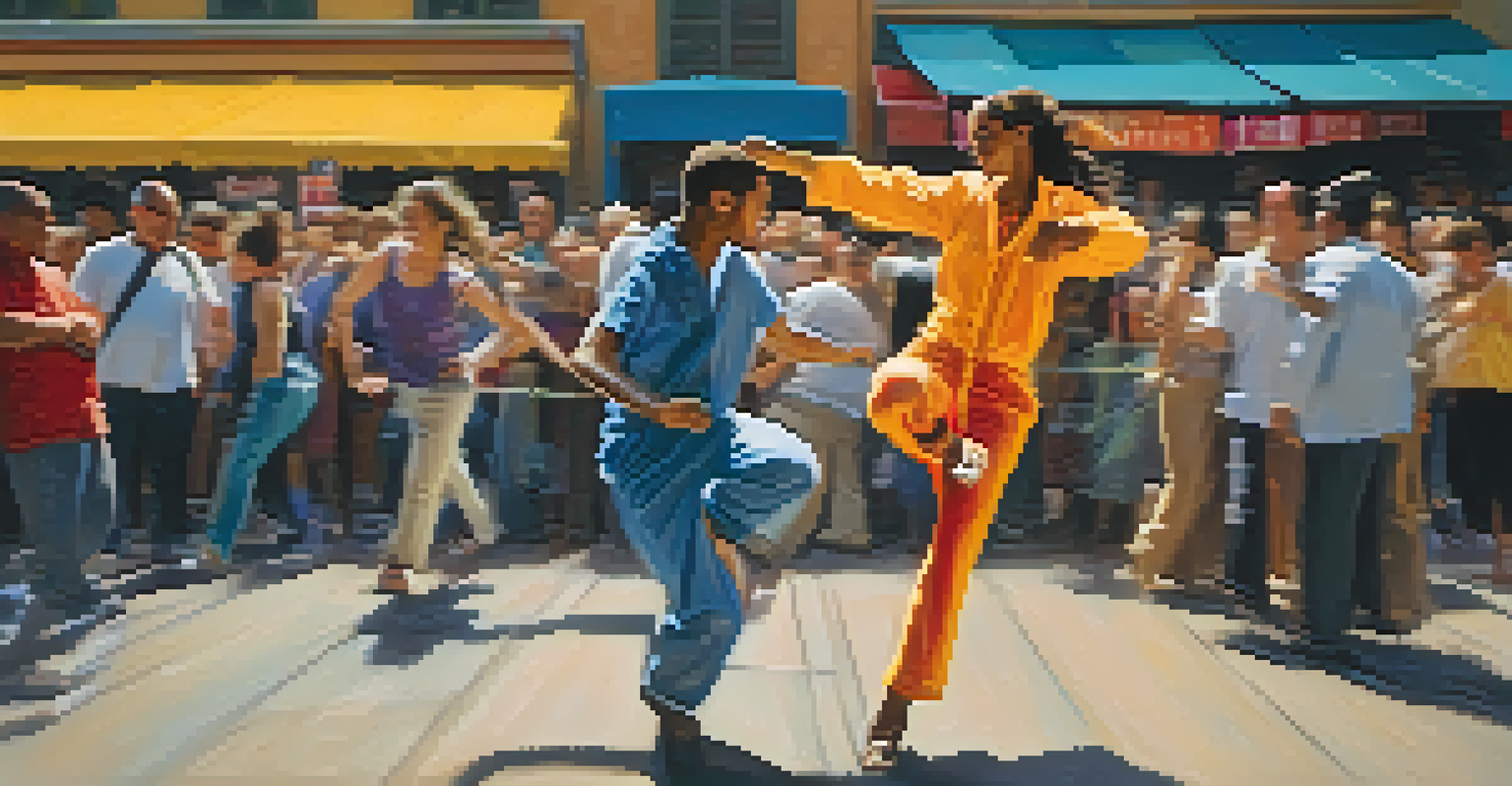Mastering Composition: Travel Photography Techniques to Use

Understanding the Basics of Composition in Photography
Composition is the framework that guides how your photograph tells a story. It involves arranging elements within the frame to create a visually appealing image. By mastering these basics, you can significantly improve the impact of your travel photos.
Composition is the master key to photography, the start of everything.
The rule of thirds is a great starting point, where you divide your frame into three equal parts both horizontally and vertically. Placing your subject at the intersections of these lines can lead to a more balanced and engaging photograph. This simple technique can transform everyday scenes into captivating visuals.
Another essential aspect involves leading lines, which are lines within your image that guide the viewer's eye to the subject. Whether it’s a winding road, a river, or a path through a forest, leading lines can add depth and perspective, making your travel photos pop.
Utilizing Natural Light for Stunning Travel Shots
Natural light plays a crucial role in photography, influencing mood, tone, and the overall quality of your images. Understanding how to harness natural light can elevate your travel photography from average to breathtaking. The golden hour, shortly after sunrise or before sunset, is particularly magical for capturing warm, soft light.

When photographing in bright sunlight, look for shadows and interesting textures that can enhance your composition. Sometimes, moving into the shade can reduce harsh glare and help you capture details in your subject. Remember, even on cloudy days, the diffused light can create a soft, pleasant atmosphere.
Master Composition Basics
Understanding and applying composition techniques like the rule of thirds can significantly enhance the storytelling aspect of your travel photos.
Experimenting with different angles and perspectives can also help you make the most out of natural light. By changing your position, you can discover how light interacts with your subject and environment, leading to unique and memorable photographs.
Incorporating Foreground Elements for Depth
Adding foreground elements to your travel photos can create a sense of depth, making your images more immersive. This technique invites the viewer into your photograph, creating layers that draw the eye toward the main subject. Consider incorporating interesting rocks, plants, or structures in the front of your frame.
The camera is an instrument that teaches people how to see without a camera.
Think of it like setting the stage for a play; the foreground acts as a visual invitation that enhances the story you want to tell. For instance, a flower in the foreground can beautifully frame a mountain range in the background, adding context and intrigue to your shot.
By playing with depth of field, you can blur the foreground elements while keeping your main subject in sharp focus. This technique not only helps highlight your subject but also creates a dreamy, artistic effect that can be truly captivating.
Mastering the Art of Framing in Travel Photography
Framing is an effective technique that involves using elements within the scene to create a ‘frame’ around your subject. This method draws attention to the subject and adds context to the image. Natural frames can be anything from archways, windows, or even overhanging branches.
Imagine standing in a beautiful garden and capturing a view of a historic building through an ornate gate. The gate acts as a natural frame, enhancing the visual appeal of the photograph. This technique can transform the ordinary into something extraordinary.
Harness Natural Light
Utilizing natural light, especially during the golden hour, can dramatically elevate the mood and quality of your travel photography.
When framing your shots, be mindful of the lines and shapes around you. Ensuring they guide the viewer’s eye toward the subject can elevate your composition significantly. It’s all about creating a balanced and engaging image that tells a story.
Capturing Movement to Convey a Sense of Adventure
Travel photography is often about capturing the essence of a place, and movement can play a significant role in conveying that sense of adventure. Whether it’s a bustling market or a serene beach, incorporating movement can add life to your images. Techniques like panning or using a slower shutter speed can create dynamic, visually appealing photographs.
For example, when photographing a street performer, try using a slower shutter speed to blur their movement while keeping the background sharp. This technique can create a sense of action, drawing the viewer into the scene. Think of it as capturing a moment that tells a story.
Don’t shy away from experimenting with different exposure settings to achieve the desired effect. Sometimes, the unexpected results can lead to stunning and unique photographs that truly reflect the spirit of your travels.
Exploring Unique Perspectives for Unforgettable Images
One of the best ways to make your travel photography stand out is by exploring unique perspectives. Instead of always shooting from eye level, try getting low to the ground or finding a high vantage point. This shift in perspective can provide fresh and interesting angles that differentiate your photos from the rest.
For instance, kneeling down to capture a child playing with a local animal can evoke a sense of joy and connection, which might be lost from a higher angle. Similarly, photographing a stunning landscape from an elevated position can give it a grand scale that captivates viewers.
Enhance Photos with Editing
Effective editing techniques can enhance your travel photographs by refining colors and composition, making them more impactful without losing authenticity.
Remember, the world is full of textures and details that often go unnoticed. By focusing on these elements from different angles, you can showcase the richness of your travel experiences, making your photographs more engaging and memorable.
Editing Techniques to Enhance Your Travel Photography
Editing is where you can truly bring your travel photographs to life. Software like Adobe Lightroom or Photoshop allows you to enhance colors, adjust exposure, and fine-tune details to make your images pop. The key is to enhance your photos without over-editing, maintaining their authenticity.
Consider adjusting the contrast to add depth and make colors stand out. Cropping can also be a powerful tool, allowing you to refine your composition and focus on the most compelling aspects of your photograph. Remember, a little adjustment can go a long way.

Lastly, don’t be afraid to experiment with filters and presets, but use them sparingly. The goal is to enhance your travel story, not to create a different one. With the right editing techniques, you can transform good travel photos into great ones!